I got a strange feature request from Probeman, but the more I thought about it, the more reasonable it sounded.
Anyway, here's the deal: in Probe for EPMA we can integrate JEOL or Cameca WDS EPMA instruments with EDS systems from Thermo, Bruker or JEOL. However, Probe for EPMA does not connect to the EDS system until it is needed. That could be because one starts an EDS acquisition (from an existing WDS-EDS run), or one needs to extract EDS net intensities for quantification, or maybe just because one decides to open the Acquisition Options dialog from the Acquire! window.
When the Acquisition Options dialog is opened, Probe for EPMA checks the current EDS pulse process time in the EDS system and updates the value displayed in the dialog. If the EDS interface is not already connected, it tries to connect to the EDS system which might be on the same computer as Probe for EPMA (e.g., Thermo or Bruker) or on a remote computer (e.g., JEOL 8230/8530 and iSP100/iHP200F). The Bruker and Thermo EDS systems can also be on a remote computer depending on how your computer network is arranged.
For example, when the Acquisition Options dialog is opened and a Thermo NSS or Pathfinder system is present, this dialog would previously be displayed:
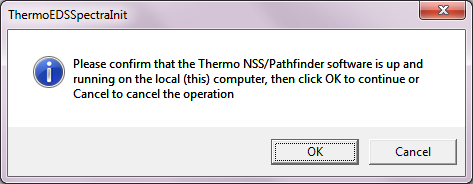
to prompt you to either click OK to attempt to connect to the Thermo system *or* to click Cancel to exit and not open the Acquisition Options dialog. This means that the Acquisition Options dialog cannot be opened unless the Thermo EDS software is up and running on a local or remote computer. But what if you don't want to use the integrated WDS-EDS acquisition in Probe for EPMA? Or even worse, what if there's a problem with the Thermo software or computer and you can't run the Thermo software at all?
One could close the application and edit the Probewin.ini file to indicate that no EDS system is present (EDSSpectraInterfacePresent=0), or perhaps we could just temporarily disable the EDS interface just for this session? That was Probeman's thought and so we've implemented that so, when being prompted for attempting a connection to the Thermo (or Bruker or JEOL) EDS software, we are now presented with this dialog:
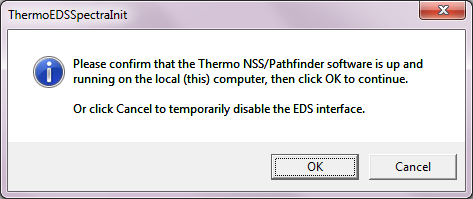
A slightly different message appears if the Thermo system is on another computer, but the key point is that when one clicks Cancel, instead of exiting and not opening the Acquisition Options dialog, it merely temporarily disables the EDS interface (for the duration of this session) and displays the dialog as seen here with the EDS controls disabled:
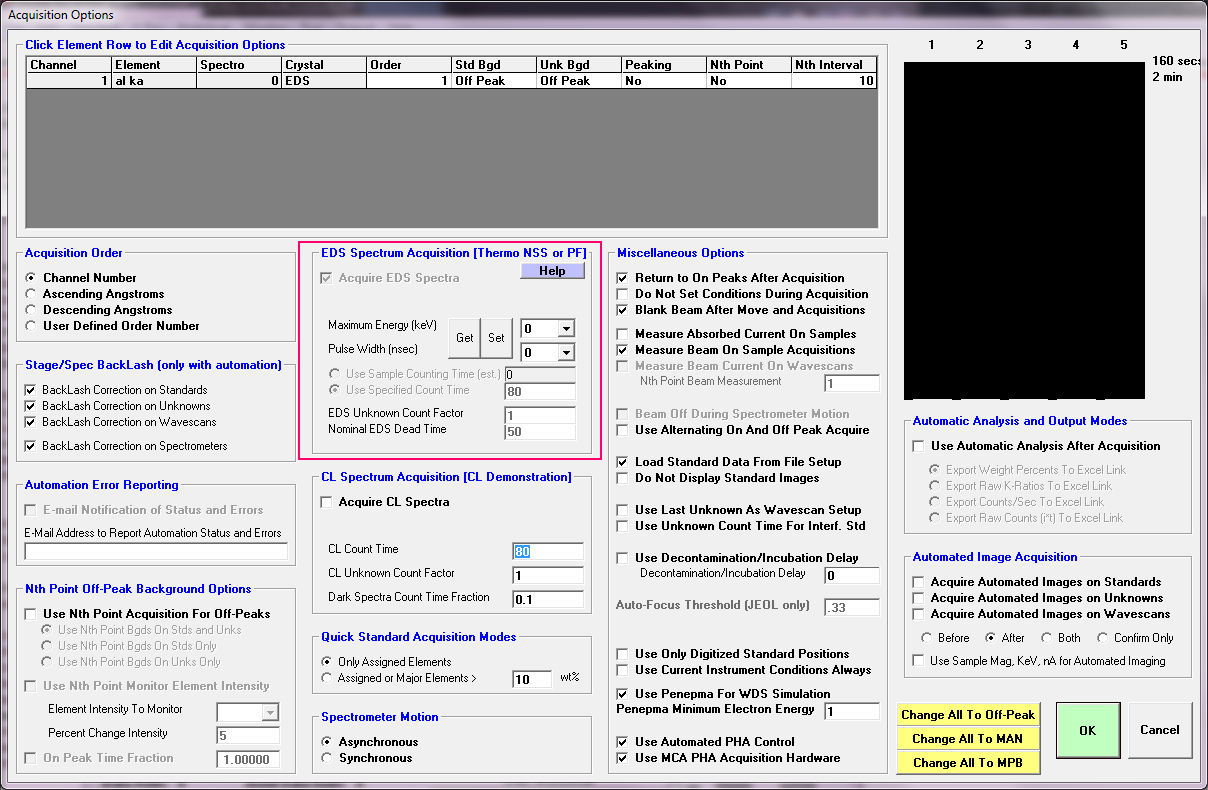
Of course you'll probably want to add some elements by WDS... but the point being you can proceed and open the Acquisiiton Options dialog without having to get the Thermo EDS software up and running just to analyze some WDS elements.
Now what happens if you then decide to start an EDS acquisition (for a run that already contains EDS data)? Well you'll get this dialog:
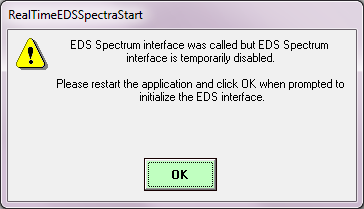
And what about if you already have some EDS element acquired and try to quant them? Well, you'll get this dialog:
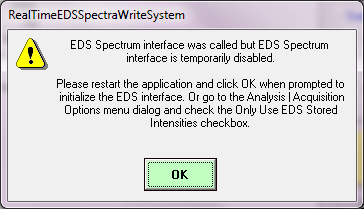
Note that you can re-start the software and then have the EDS software up and running and then connect to it in order to obtain new net intensities, *or* you could simply open the Analysis Options dialog from the Analytical menu and check the following checkbox:
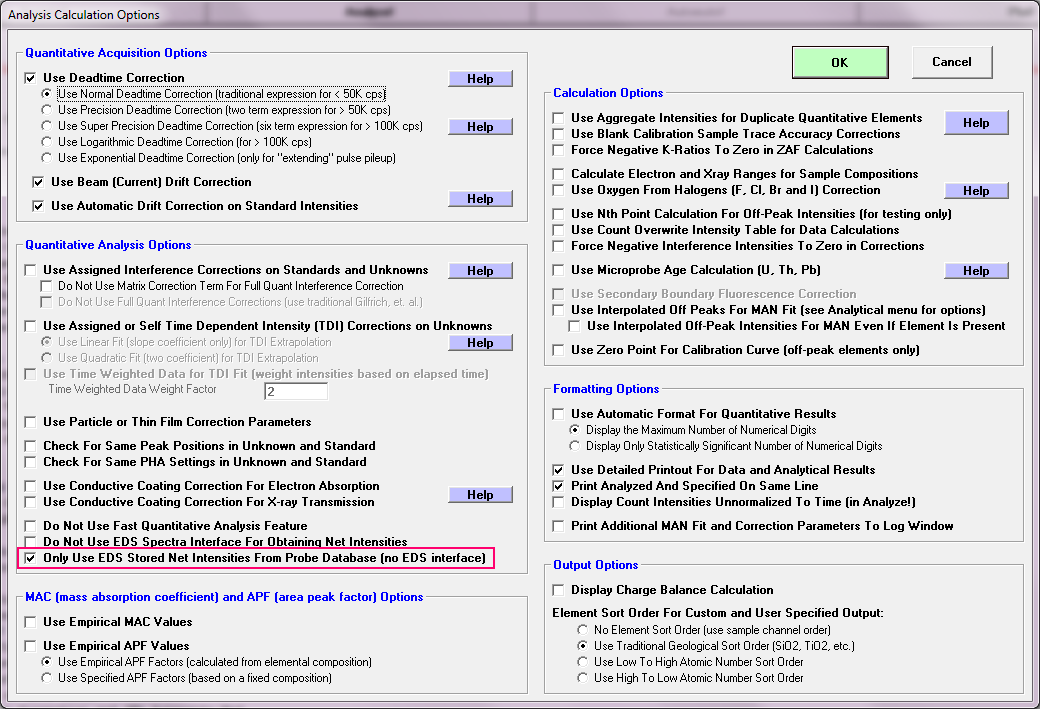
This forces Probe for EPMA to utilize EDS net intensities that have been previously stored in the user's current probe database. This, by the way, is also a neat way to process data off-line from Thermo, Bruker or JEOL EDS systems. Though remember, one can install an off-line version of the Thermo and Bruker software on any computer for the purposes of obtaining net intensities.
Note that JEOL does not have an "off-line" version of their software so this "Only Use Stored Intensities" option is very handy when you want to process WDS-EDS analyses on another computer not connected to the microprobe private network.